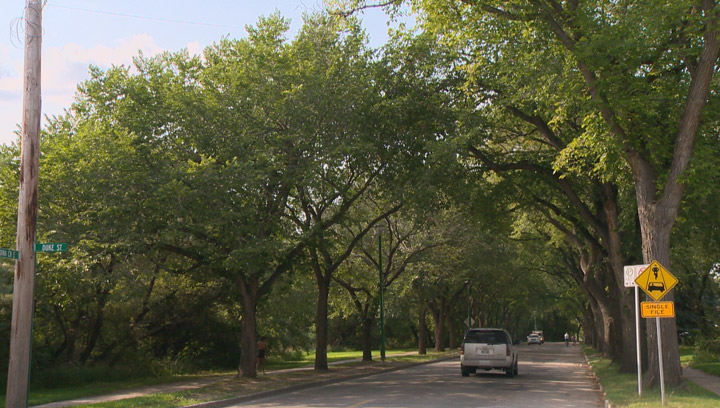Pesky elm seeds are expected to fill the city streets following the drought Saskatchewan saw in 2017.

Russell Eirich, Regina’s manager of forestry, pest control and horticulture, shared all things Dutch elm disease in Regina’s The Buzz on Bugs program and what the city should be expecting in terms of mosquitoes and cankerworms for summer of 2018.
Elm trees typically begin to overproduce elm seeds about a year following a drought due to high stress, according to Eirich, and considering the drought that the province had last year, he said people can expect to see plenty of elm seeds throughout the city.
The elm trees people see lined up on Regina streets are Big American elm trees, and Eirich said some of the best ones in the city can be found on Angus and Leopold crescents.
Once the seeds are formed on the trees, Eirich said it takes about five to 10 days before they start to mature and fall off the tree, often turning a papery-brown colour.
“As the seeds mature and begin to brown on the trees, the tree is not dying, it is just the seeds maturing. When we get years like this, we get about 100 – 150 calls from residents thinking that the trees are dying, and we can say that it’s not Dutch elm disease, it’s not any disease in the elms, it’s just the trees doing what they do naturally,” Eirich said.
When it comes to maintaining the city’s elm trees, Eirich is reassuring people that crews are out on the streets working to ensure proper maintenance, especially considering the hot and dry summer that has been predicted.
“We have a number of watering crews out and a number of trucks that are going to be watering the newer trees. We are actually going to be starting a full watering program – seven days a week for the trees that are anywhere from a year in the ground up to four years in the ground. We’ll be trying to water all of our boulevard trees, all of our new trees like that,” Eirich said.
“I think we’re around 4,800 trees that we have to water, and we’re going to try to hit those trees once every ten days or so, but again, it’s starting in mid-June period where we are actually going to run those trucks seven days a week.”
For those wondering where all of the water to support this kind of watering system comes from, Eirich said that it’s all provided by the city’s park system.
When it comes to maintaining safe root trees that residents may have at home, Eirich said it all comes down to the watering.
“It’s a deep-root type watering. Just watering your lawn is not enough. What you have to do is you have to get that water past the lawn, so what we would recommend is to take a potato fork or something and punch holes through the sod and then just let the hose trickle out nice and slow and then the water will bypass the grass through those holes and get down into the root zone.”
Lastly, Eirich provided a mosquito update for residents of Regina by confirming although the province is halfway to its average mosquito population, the larger parts of the Prairies remain very dry. He said a common places they are being found is in people’s backyards in places like the water pail that is still harbouring some snow melt.




Comments